Merthyr Tydfil, Brynmawr (via heads of valleys), Blaenavon, Pontypool, Newport- (38 miles)
Two heritage railways, four national cycle routes (route 8 (Taff trail), route 46, route 492 and route 49)
We debated if it was a good idea to do this ride today as the ‘met office’ had issued an amber warning for high winds for the area, but after looking at the map and co-ordinating this with the weather forecast, we calculated; when we turn off the heads of valleys, there should be a tail wind (in theory). Timing was at an essence as the blustery weather was predicted to hit the area at eleven o’clock. We caught the train to Merthyr Tydfil, when we got there we looked at the sky, it was cloudy and mild, but as yet the wind hadn’t picked up.
 Without hesitation we set off for the river Taff, following this for two miles, before turning onto the railway
path which used to carry the Brecon & Merthyr Railway. We reached the Cefn Coed viaduct (something I wanted to
see for ages) and crossed it, towering above the Taff River. Opened in 1868, the line closed to passengers in 1961, but
goods services continued to run until 1966. The Taff trail continues to leave Merthyr on a good asphalt
surface going slightly uphill. A few miles on we come across the remnants of Pontsarn station (only a grassed
over platform now) followed by the Pontsarn viaduct, a smaller version of the Cefn Coed viaduct. Riding on, many
streams fell to the side of the trail and were directed into culverts under the old trackbed.
Without hesitation we set off for the river Taff, following this for two miles, before turning onto the railway
path which used to carry the Brecon & Merthyr Railway. We reached the Cefn Coed viaduct (something I wanted to
see for ages) and crossed it, towering above the Taff River. Opened in 1868, the line closed to passengers in 1961, but
goods services continued to run until 1966. The Taff trail continues to leave Merthyr on a good asphalt
surface going slightly uphill. A few miles on we come across the remnants of Pontsarn station (only a grassed
over platform now) followed by the Pontsarn viaduct, a smaller version of the Cefn Coed viaduct. Riding on, many
streams fell to the side of the trail and were directed into culverts under the old trackbed.
After about five miles, a bricked up tunnel appeared on the right that we now know to be the Morlais Tunnel. A little way on from this, the railway path ends in no uncertain terms when it becomes private, forcing us onto the road. We turn right and head up hill, passing a group of elderly ladies on a walk. They greeted us with,"Good morning boys," which cheered my mate up no end, as we both hadn't been called that in a while. At the top of the hill is the Brecon mountain railway. There were no trains running this time of year, but we thought the cafe may be open. We walked in to the main building unchallenged, the distinctive smell of light engine oil hit us, not the unpleasant odour of cars burning oil from their exhaust, more like the smell of my mum’s old Singer sewing machine. The cafe was shut.
 One hundred yards to the left of the Brecon mountain railway building, is the old Pant
station (again theres just two grassed over platforms populated by five sheep, but no buildings), which
used to serve the village of the same namesake. We travelled along Pant road and through
the village past a brick ventilation shaft of the Morlais railway tunnel, the now shut tunnel runs underneath
the Pontsarn mountain and emerges in the middle of Pant village. National cycle route 46 signs turn us left
up an incredibly steep footpath (we had to walk up it) which brings us out near a small lake. The path now
follows the heads of the valleys road, but is separate to it. We are obviously quite high as we cross moorland
scrub; the forecasters were right as the wind was now blowing hard from our left, causing us to lean at an angle.
One hundred yards to the left of the Brecon mountain railway building, is the old Pant
station (again theres just two grassed over platforms populated by five sheep, but no buildings), which
used to serve the village of the same namesake. We travelled along Pant road and through
the village past a brick ventilation shaft of the Morlais railway tunnel, the now shut tunnel runs underneath
the Pontsarn mountain and emerges in the middle of Pant village. National cycle route 46 signs turn us left
up an incredibly steep footpath (we had to walk up it) which brings us out near a small lake. The path now
follows the heads of the valleys road, but is separate to it. We are obviously quite high as we cross moorland
scrub; the forecasters were right as the wind was now blowing hard from our left, causing us to lean at an angle.
We stopped for a tea in a road side burger van, and then turned right under the main A465. We continue on past Bryn Bach Country Park, Bryn Bach is a large recreational area on the outskirts of Tredegar. It was once an open-cast mine, but the massive craters left by the workings, have now been lined with plastic and filled with water making a huge lake, there is cafe (and campsite) here, but we pushed on. Then we head into into ‘Dukes Town’, Beaufort and then into Brynmawr. Brynmawr is an old market town, sometimes cited as the highest town in Wales, situated some 1,500 feet above sea level.
 A new path transverses us up and across the Blorenge mountain heading for the
racehorse pond on the B4248, the wind was now blowing a gale and if ever we needed a thirty mile an hour
tailwind, this was it. We passed a runner heading in the same direction, and I couldn’t help thinking; I
don’t envy him when he has to turn around and run back. At the main road there were two other paths on the
other side of the road, one seemed to continue up the mountain and the other went down. The ‘Garmin’ pointed us
downhill, but there was no tarmac, only a muddy trail with high tufts of grass. Once on it, you could see it
was a former railway bed as there was still ballast underfoot. The trail was hard going, only helped by the fact; we
had the wind pushing us and it was slightly downhill. The Garmin site and Google maps show this as a cycle
track, but it is more suitable to mountain bike wheels than 700c wheels.
A new path transverses us up and across the Blorenge mountain heading for the
racehorse pond on the B4248, the wind was now blowing a gale and if ever we needed a thirty mile an hour
tailwind, this was it. We passed a runner heading in the same direction, and I couldn’t help thinking; I
don’t envy him when he has to turn around and run back. At the main road there were two other paths on the
other side of the road, one seemed to continue up the mountain and the other went down. The ‘Garmin’ pointed us
downhill, but there was no tarmac, only a muddy trail with high tufts of grass. Once on it, you could see it
was a former railway bed as there was still ballast underfoot. The trail was hard going, only helped by the fact; we
had the wind pushing us and it was slightly downhill. The Garmin site and Google maps show this as a cycle
track, but it is more suitable to mountain bike wheels than 700c wheels.
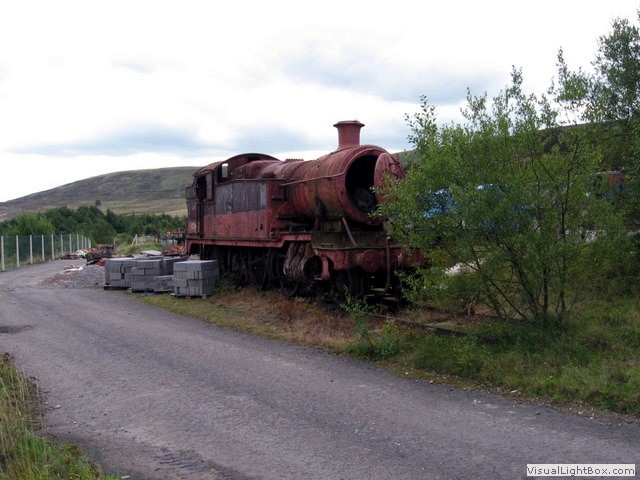 At the ‘Whistle Inn’ (the current terminus to the Pontypool and Blaenavon Railway) we
crossed over a bridge and joined a path that runs alongside the railway tracks, at least this was tarmac.
The Garn lakes appeared on the left side and it wasn’t long before we came to the main station of the Pontypool
and Blaenavon heritage Railway. Again there were no trains running as this was the beginning of November.
Further on, we crossed the tracks and ‘Big pit’ could now be seen above us. The going was good, downhill,
and fast as we travel through Varteg, and Peny-Lan wood, onto the Garndiffaith viaduct being blown along
by a hurricane tailwind. Either side of the path, the bracken disappeared and was replaced by houses, indicating
we are nearing Pontypool. The trackbed ends here as we duck under the A4043 and ride past Tesco’s. The neighbourhood
is now familiar as we plunge under the A4042 to Pontymoile canal basin. From here my commentary stops, as
I’ve already covered this part on another ride, but the journey continues along the Brecon and Monmouthshire
canal all the way to Newport. To continue reading this leg of the journey click
here and read the last paragraph.
At the ‘Whistle Inn’ (the current terminus to the Pontypool and Blaenavon Railway) we
crossed over a bridge and joined a path that runs alongside the railway tracks, at least this was tarmac.
The Garn lakes appeared on the left side and it wasn’t long before we came to the main station of the Pontypool
and Blaenavon heritage Railway. Again there were no trains running as this was the beginning of November.
Further on, we crossed the tracks and ‘Big pit’ could now be seen above us. The going was good, downhill,
and fast as we travel through Varteg, and Peny-Lan wood, onto the Garndiffaith viaduct being blown along
by a hurricane tailwind. Either side of the path, the bracken disappeared and was replaced by houses, indicating
we are nearing Pontypool. The trackbed ends here as we duck under the A4043 and ride past Tesco’s. The neighbourhood
is now familiar as we plunge under the A4042 to Pontymoile canal basin. From here my commentary stops, as
I’ve already covered this part on another ride, but the journey continues along the Brecon and Monmouthshire
canal all the way to Newport. To continue reading this leg of the journey click
here and read the last paragraph.
It was cold, and windy (windy wasn’t the word), but when we crossed the Blorenge mountain from Brynmawr to the Racehorse pond; the views were out of this world. Just our luck, we pass two heritage railways and both were shut. This ride needs to be done again in the summer and perhaps; a trip on both railways should be scheduled in.
-
Gallery
 Why not have a look at the gallery relating to this ride. Click the image or the title.
Why not have a look at the gallery relating to this ride. Click the image or the title. -
Pontsarn Station
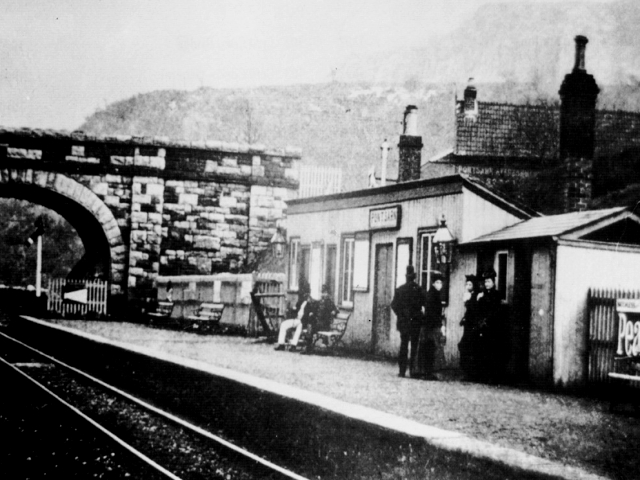 Situated in the old parish of Vaynor, Pontsarn developed after the coming of the railways and became a
popular Victorian destination for a day out in the countryside. The original wooden 18th century bridge
over the Taff Fechan river was replaced by a seven span stone bridge in 1864, this is now a protected listed
bridge. The Blue Pool and waterfall (just down from the station) are the features of natural beauty the
Victorians sought in a day away from the smoke of Merthyr.
Situated in the old parish of Vaynor, Pontsarn developed after the coming of the railways and became a
popular Victorian destination for a day out in the countryside. The original wooden 18th century bridge
over the Taff Fechan river was replaced by a seven span stone bridge in 1864, this is now a protected listed
bridge. The Blue Pool and waterfall (just down from the station) are the features of natural beauty the
Victorians sought in a day away from the smoke of Merthyr. -
The Brecon Mountain Railway
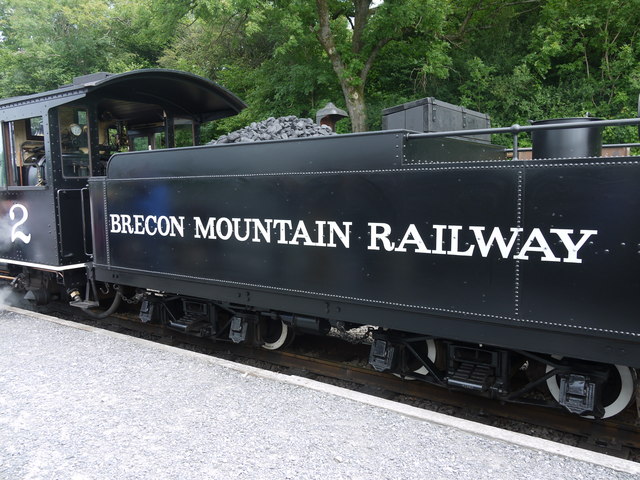 The Brecon Mountain Railway is a narrow gauge tourist railway that runs through the Brecon Beacons along
the full length of the Pontsticill Reservoir and uphill passing the nearby upper (Pentwyn) reservoir to
Torpantau. The line runs along part of the trackbed of the northern section of the former standard gauge
Brecon and Merthyr Railway from Pant to a new station at Torpantau, via Pontsticill and Dolygaer Loop, it’s
a total of 5 miles in length.
The Brecon Mountain Railway is a narrow gauge tourist railway that runs through the Brecon Beacons along
the full length of the Pontsticill Reservoir and uphill passing the nearby upper (Pentwyn) reservoir to
Torpantau. The line runs along part of the trackbed of the northern section of the former standard gauge
Brecon and Merthyr Railway from Pant to a new station at Torpantau, via Pontsticill and Dolygaer Loop, it’s
a total of 5 miles in length. -
Racehorse pond
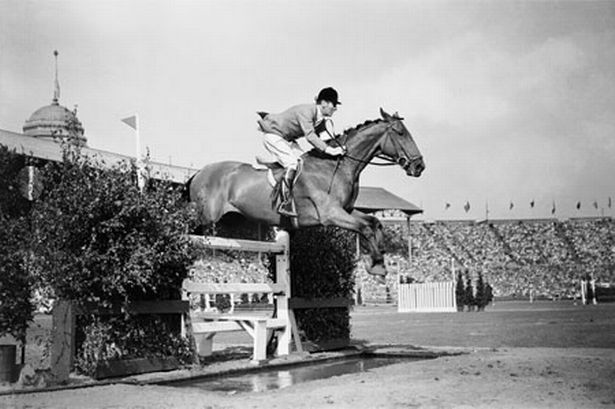 The only reference I can find to the racehorse pond is; Foxhunter (1940–1959), a champion show
jumping horse ridden by Harry Llewellyn, best known for their part in securing Great Britain's only
gold medal at the 1952 Olympics. Foxhunter died in 1959, and was buried on the Blorenge
mountain with a memorial plaque nearby.
The only reference I can find to the racehorse pond is; Foxhunter (1940–1959), a champion show
jumping horse ridden by Harry Llewellyn, best known for their part in securing Great Britain's only
gold medal at the 1952 Olympics. Foxhunter died in 1959, and was buried on the Blorenge
mountain with a memorial plaque nearby. -
The Pontypool and Blaenavon Railway
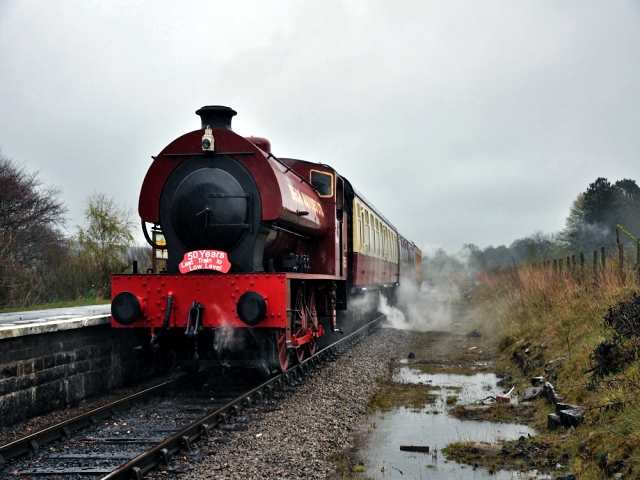 The Pontypool and Blaenavon Railway is a heritage railway in, running trains between a halt platform
opposite the Whistle Inn public house (famed for its collection of miner's lamps) and southwards to a
two-platform station at the site of the Big Pit National Coal Museum.
The Pontypool and Blaenavon Railway is a heritage railway in, running trains between a halt platform
opposite the Whistle Inn public house (famed for its collection of miner's lamps) and southwards to a
two-platform station at the site of the Big Pit National Coal Museum. -
The Big Pit Coal mining museum
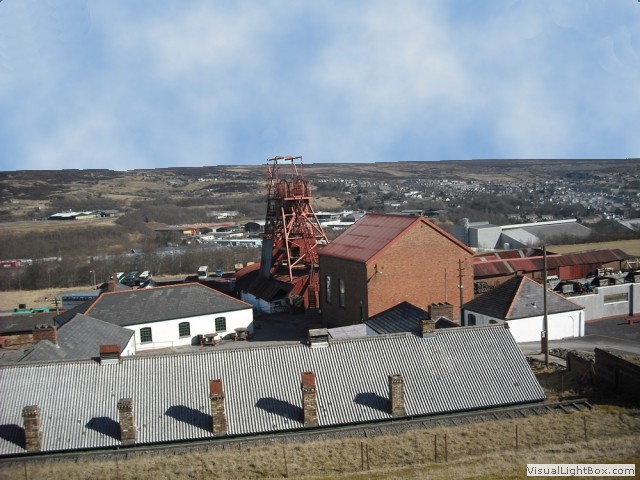 The Big Pit: National Coal Museum is an industrial heritage museum in Blaenavon. It’s was a working
coal mine from 1860 to 1980, and it was opened to visitors from 1980 under the auspices of the National
Museum Wales. The site is dedicated to operational preservation of the Welsh heritage of coal mining.
The Big Pit: National Coal Museum is an industrial heritage museum in Blaenavon. It’s was a working
coal mine from 1860 to 1980, and it was opened to visitors from 1980 under the auspices of the National
Museum Wales. The site is dedicated to operational preservation of the Welsh heritage of coal mining.

 Situated in the old parish of Vaynor, Pontsarn developed after the coming of the railways and became a
popular Victorian destination for a day out in the countryside. The original wooden 18th century bridge
over the Taff Fechan river was replaced by a seven span stone bridge in 1864, this is now a protected listed
bridge. The Blue Pool and waterfall (just down from the station) are the features of natural beauty the
Victorians sought in a day away from the smoke of Merthyr.
Situated in the old parish of Vaynor, Pontsarn developed after the coming of the railways and became a
popular Victorian destination for a day out in the countryside. The original wooden 18th century bridge
over the Taff Fechan river was replaced by a seven span stone bridge in 1864, this is now a protected listed
bridge. The Blue Pool and waterfall (just down from the station) are the features of natural beauty the
Victorians sought in a day away from the smoke of Merthyr. The Brecon Mountain Railway is a narrow gauge tourist railway that runs through the Brecon Beacons along
the full length of the Pontsticill Reservoir and uphill passing the nearby upper (Pentwyn) reservoir to
Torpantau. The line runs along part of the trackbed of the northern section of the former standard gauge
Brecon and Merthyr Railway from Pant to a new station at Torpantau, via Pontsticill and Dolygaer Loop, it’s
a total of 5 miles in length.
The Brecon Mountain Railway is a narrow gauge tourist railway that runs through the Brecon Beacons along
the full length of the Pontsticill Reservoir and uphill passing the nearby upper (Pentwyn) reservoir to
Torpantau. The line runs along part of the trackbed of the northern section of the former standard gauge
Brecon and Merthyr Railway from Pant to a new station at Torpantau, via Pontsticill and Dolygaer Loop, it’s
a total of 5 miles in length. The only reference I can find to the racehorse pond is; Foxhunter (1940–1959), a champion show
jumping horse ridden by Harry Llewellyn, best known for their part in securing Great Britain's only
gold medal at the 1952 Olympics. Foxhunter died in 1959, and was buried on the Blorenge
mountain with a memorial plaque nearby.
The only reference I can find to the racehorse pond is; Foxhunter (1940–1959), a champion show
jumping horse ridden by Harry Llewellyn, best known for their part in securing Great Britain's only
gold medal at the 1952 Olympics. Foxhunter died in 1959, and was buried on the Blorenge
mountain with a memorial plaque nearby. The Pontypool and Blaenavon Railway is a heritage railway in, running trains between a halt platform
opposite the Whistle Inn public house (famed for its collection of miner's lamps) and southwards to a
two-platform station at the site of the Big Pit National Coal Museum.
The Pontypool and Blaenavon Railway is a heritage railway in, running trains between a halt platform
opposite the Whistle Inn public house (famed for its collection of miner's lamps) and southwards to a
two-platform station at the site of the Big Pit National Coal Museum. The Big Pit: National Coal Museum is an industrial heritage museum in Blaenavon. It’s was a working
coal mine from 1860 to 1980, and it was opened to visitors from 1980 under the auspices of the National
Museum Wales. The site is dedicated to operational preservation of the Welsh heritage of coal mining.
The Big Pit: National Coal Museum is an industrial heritage museum in Blaenavon. It’s was a working
coal mine from 1860 to 1980, and it was opened to visitors from 1980 under the auspices of the National
Museum Wales. The site is dedicated to operational preservation of the Welsh heritage of coal mining.